
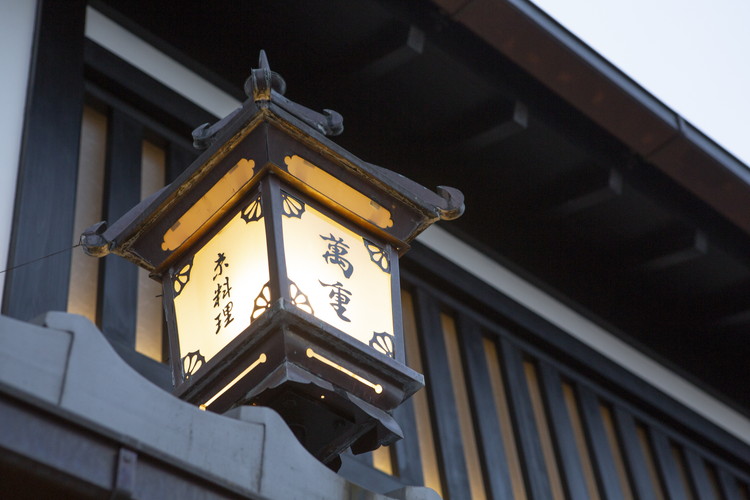
Kyōryōri Manshige was a restaurant founded in the Nishijin area of Kyoto, an area not only known of its kimono culture, but also oversaw the city’s rise to prosperity in the last 80 years. The restaurant has attracted the discerning eyes of the gentlemen textile business owners owing to its locality and many other factors such as the taste, portion, service, space, and furniture. The exquisite dishes, including the famous “Tai no Aradaki” (simmered sea bream) that was created to meet the high demands of the textile business owners, and the beautifully prepared rooms will not disappoint its visitors. The dishes are prepared by the third generation young successor who goes to the market everyday to skillfully select the best ingredients and then carefully prepares them with specific vessels to reflect the season. Each room will satisfy the guests’ five senses as guests receive services in rooms with artworks that effortlessly transform the space.
Therefore, naturally, time spent at Manshige is time spent appreciating a total work of art.
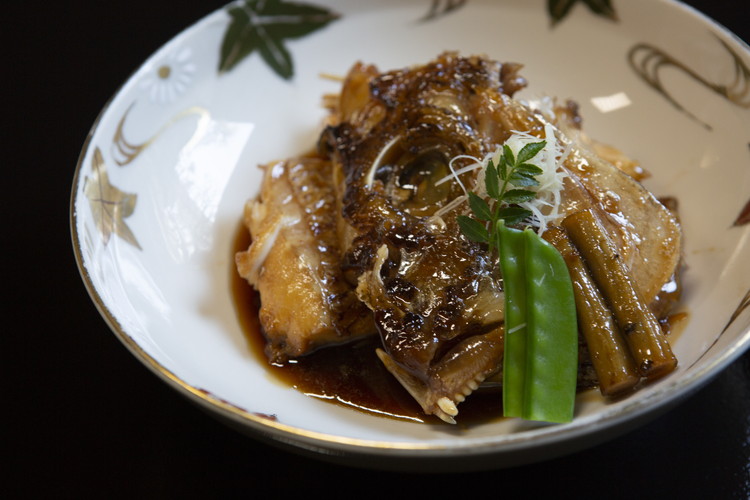
Manshige’s specialty “Tai no Aradaki”, which has been popular since its previous generations, is made by boiling down the boney parts of sea bream until it becomes glossy. The salty-sweet umami of the sea bream is an exquisite taste that guests can solidly savor.
※Contents of the sea bream vary depending on the price.
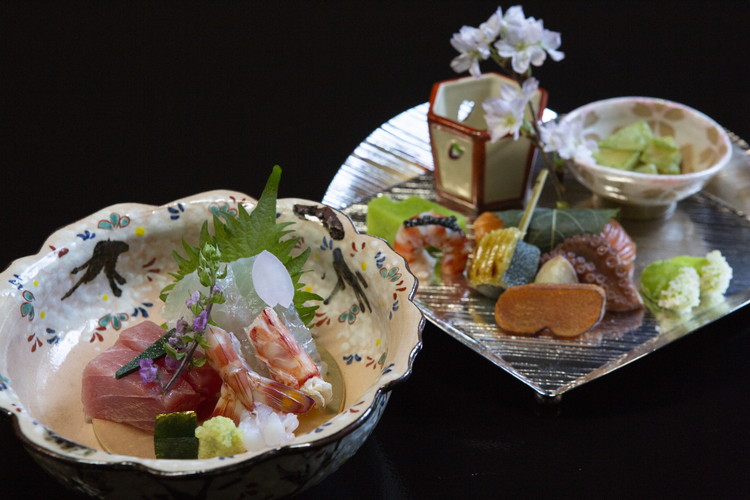
Eye-pleasing dishes are thoroughly prepared to reflect the tastes of each season, and the chef’s commitment to particularity can be seen in the smallest details: the ingredients, the choice of the vessels, and the plating.
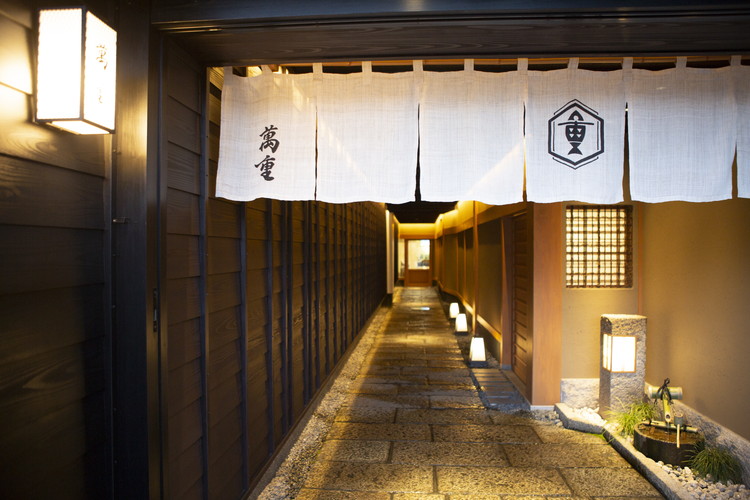

The restaurant has 15 rooms, large and small, in a Sukiya-style building with a depth that is unique to a Kyoto machiya. Each room is devised with furniture to reflect the season and to please the eyes. In addition to three sunken kotatsu rooms, all washitsu (Japanese-style tatami rooms) can accommodate chair seats, which has been increasing in demand in recent years.
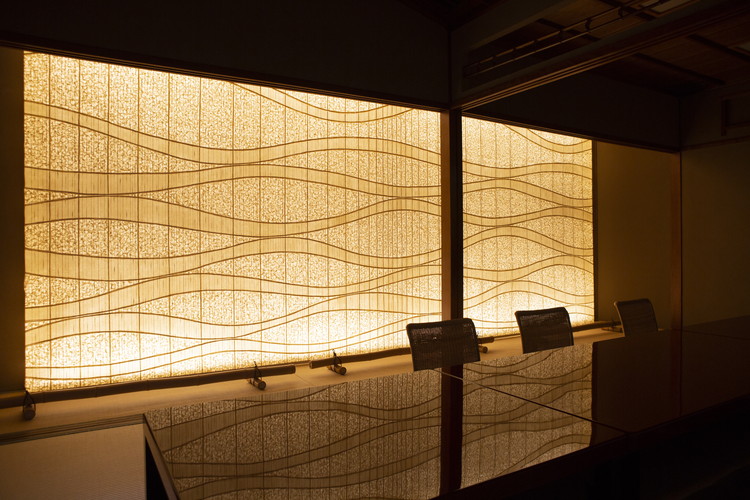
The internationally active washi artist, Eriko Horiki, breathes a new sensitivity to the Sukiya rooms, and her luxurious installations can be appreciated in various ways.
The picture shows a room on the first floor in which Eriko Horiki’s dynamic artwork stands out against the faint lighting and noticeably draws attention. There is a lingering sense of beauty when the lights are dimmed and the lingering light faintly reflects off the red lacquered table.
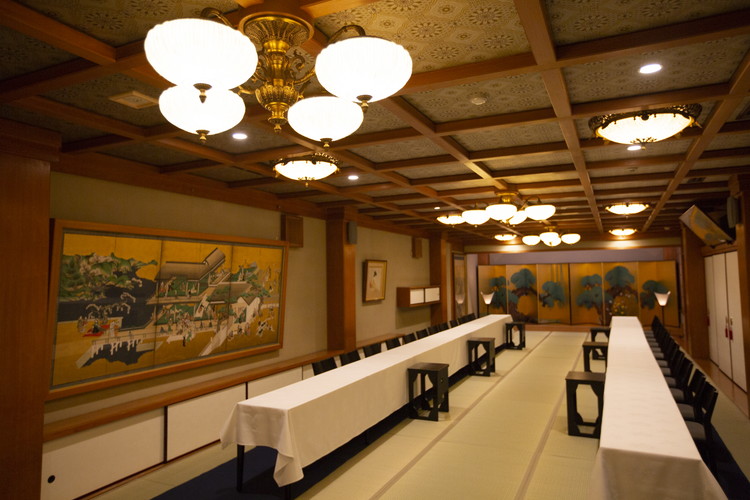

This is a hall with a ceiling decorated in Nishijin fabric. At the time of renovation, Ms. Eriko Horiki kept the old British chandelier and inserted washi with from frosted glass designs. Using brown and green threads as accents, Ms. Horiki strained the washi to match the old pine tree on the folding screens. Additionally, threads of seven colors representing Nishijin were also added to the hall.
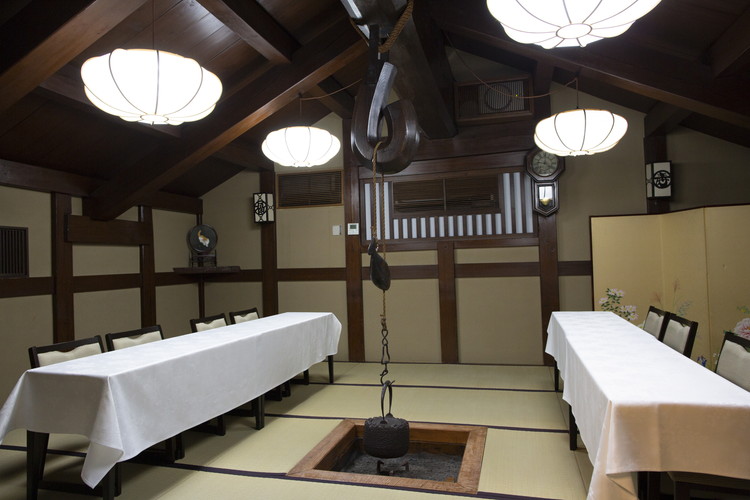
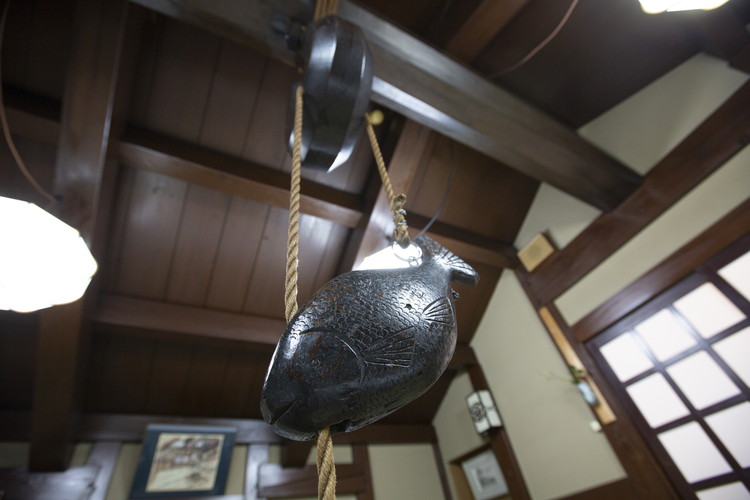
This is a folk art room reconstructed from a warehouse in northern Kyoto. Guests can feel the playfulness of the earlier generations from the furniture and fittings around the room.
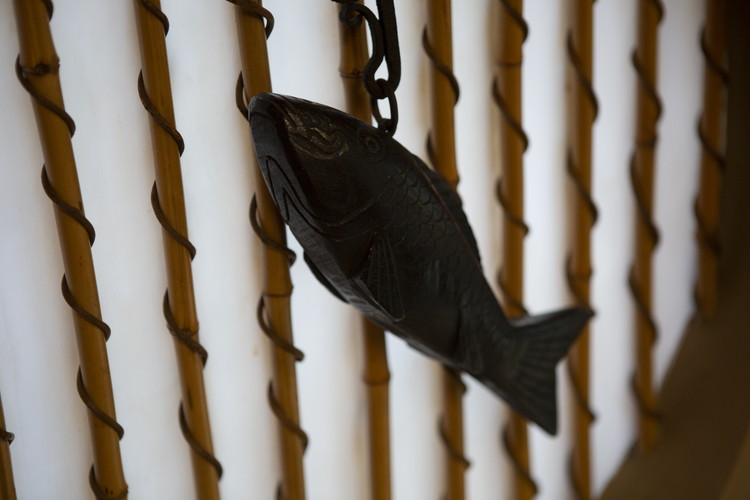

It is a production that skillfully fuses the modern and the old. The Nishijin locality is all about having genuine pieces, so works from famous contemporary Japanese painters and artist can be seen to effortlessly decorate the space and enhances the elegance of each room.
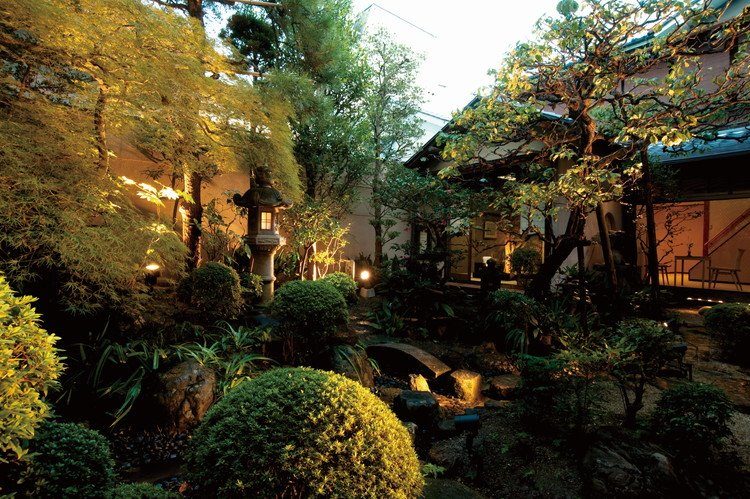
Flowers of every season are planted in the restaurant’s beautiful green garden so guests can enjoy different atmospheres regardless of the season they visit. In addition, the light up view at night also gives another different charm.
http://www.kyoryori-manshige.co.jp
| Locations |
Oomiya-dori Imadegawa Agaru, Kamigyo-ku, Kyoto-shi, Kyoto 602-8438 |
| TEL |
+81-75-441-2131 |
| Open hours |
11:30a.m.~7:30p.m.(Last entry) |